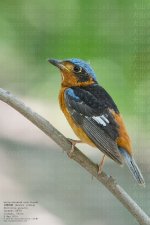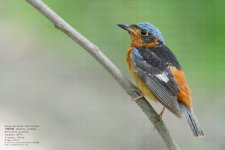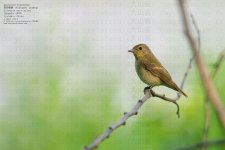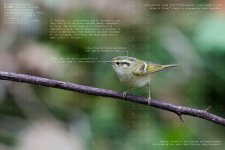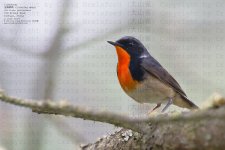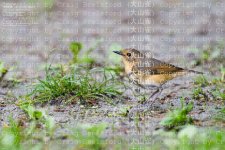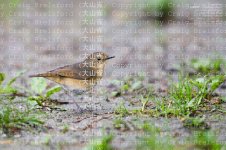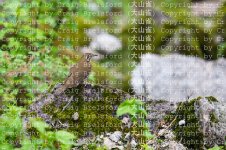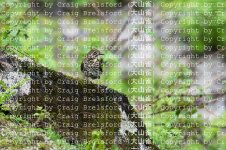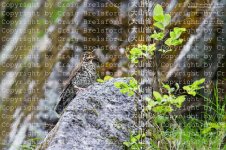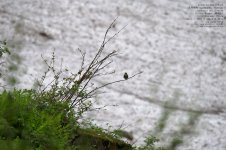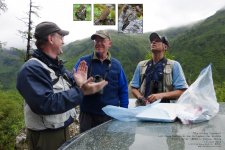A Very Worn (Out) White-throated Rock Thrush
Last week, I made my 11th trip to Yángkǒu (洋口). I created an observation point in the "forest" on the landward side of the sea wall. Like an exaggerated version of Chile, this "forest" (actually, locust trees planted to hold the soil in place) runs for dozens of kilometers but is only about 30 m wide. If you're a forest bird and want some of the comforts of your forest home as you migrate, then this plantation is your only choice; there are few tall trees, let alone forests, for miles around. From my point on this migratory highway, I was able to witness birds migrating north--for example, this white-throated rock thrush (白喉矶鸫, báihóu jīdōng, Monticola gularis). Note the abraded plumage, a result of normal wear and tear--the bird last molted months ago--as well as evidence of the rigors of migration. Upon arrival, the rock thrush was obviously exhausted, even falling asleep on the perch. A day later, after 24 hours resting in the area, the bird was livelier, no longer falling asleep on the perch, and singing more lustily. Sooner or later, it will continue its journey north. There are no toll booths on this highway, but the toll is nonetheless high, measured not in yuan but in calories burned, and collected every time the bird beats its wings. Nikon D3S, 600 mm + 1.4x TC, F/9, 1/125, ISO 2000.




